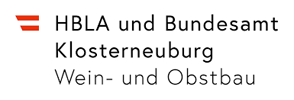Agricultural intensification and land-use change lead to habitat degradation and biodiversity loss. According to estimates, meadow orchards are also declining, because their cultivation involves high work load with low economic competitiveness. The decreasing agricultural use and maintenance of many meadow orchards results in high inaccuracy of the data on the nationwide extent of meadow orchards. Further, meadow orchards are underrepresented habitats in other biodiversity monitoring programs. The biodiversity data collected will also be available for the compilation of the Austrian Biodiversity Report, which must be submitted to the European Commission in 2026.
The methods in detail:
In order to obtain representative data for Austria, regional orchard stakeholders were involved in the selection of over 20 test areas (10 x 10 km) and plots for the biodiversity surveys referring to the large network of ARGE Streuobst. Additionally, locating the study sites across Austria considered the different ecoregions and the surrounding land use. Meadow orchard surveys are carried out in two 1km x 1km landscape sections per test area. Together with current orthophotos and surface models, this data builds the basis to develop a method for the automatically spatial designation of meadow orchards. For this purpose, multi-temporal Sentinel-2 data in the optimal time window during the trees flowering phase are also included.
Biodiversity surveys are carried out on at least one meadow orchard per landscape section. Species richness of wild bees and butterflies are recorded four times in 2024 between April and August using a standardized transect method. To record bird species, two surveys are carried out in line with the BirdLife Austria breeding bird monitoring methodology. In addition, bird calls are recorded and analyzed using acoustic detectors in the meadow orchards. Bats are recorded using acoustic detectors in combination with net sampling. All surveys are carried out by experts for these animal groups with many years of experience in handling the animals.



